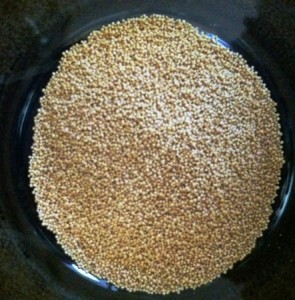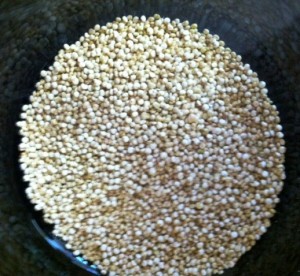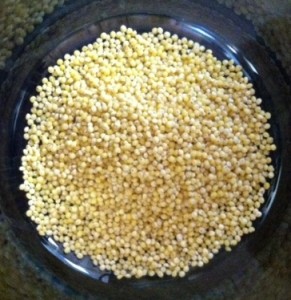Apr 23 2013
Grain Alternatives for Everyday Meals
One of the easiest ways you can add interest to a meal and ramp up nutritional value is by incorporating gluten free grain alternatives. By “alternative”, I am referring to foods that are used in the place of grain products that we are already very familiar with: wheat, rice, or corn. Grain alternatives have been used for centuries in many cultures, but it has only been the last few years that they have made an appearance on our market shelves. Typically one would have to go to a health food market to buy these items, but now I frequently see them in the health food aisle of most supermarkets.
The grain alternatives shown here are not only gluten free, they are also diabetes friendly. Today, more people than ever are being diagnosed with diabetes or a gluten intolerance such as celiac disease. Both conditions require special attention to meal planning. Including one or more of these grain alternatives adds a choice where other restrictions may apply.
 Amaranth: a broad-leafed plant which produces a tiny grain-like tan seed. It has been used as a staple by many ancient cultures around the world. Amaranth can be cooked in its whole form, and now you can find various products made from amaranth such as cold cereals or snack crackers.
Amaranth: a broad-leafed plant which produces a tiny grain-like tan seed. It has been used as a staple by many ancient cultures around the world. Amaranth can be cooked in its whole form, and now you can find various products made from amaranth such as cold cereals or snack crackers.
 Quinoa: Quinoa has been used by cultures in South America for hundreds of years, but today many varieties are grown in North America and people are discovering just how versatile quinoa is. Quinoa seeds have natural covering of saponin which is a bitter substance that protects the seed from insects and birds. Quinoa often needs to be rinsed with cold water and drained before cooking to remove the saponin.
Quinoa: Quinoa has been used by cultures in South America for hundreds of years, but today many varieties are grown in North America and people are discovering just how versatile quinoa is. Quinoa seeds have natural covering of saponin which is a bitter substance that protects the seed from insects and birds. Quinoa often needs to be rinsed with cold water and drained before cooking to remove the saponin.
 Millet: most types of millet are used for animal or bird seed, however certain varieties are used for human consumption. Millet is a small round seed that is a light yellow color with a sweet, nutty flavor.
Millet: most types of millet are used for animal or bird seed, however certain varieties are used for human consumption. Millet is a small round seed that is a light yellow color with a sweet, nutty flavor.
All three of these grain alternatives are actually seeds and not grains at all. However, once prepared, their taste and physical properties are very similar to grains. The nutritional value of amaranth, quinoa and millet include higher amounts of fiber and protein compared to wheat or rice. All three provide a rich source of iron, magnesium, and B vitamins.
Grain alternatives can be cooked whole or ground into flour for baking purposes. 1 cup of grain alternative cooked with 2 or 2 1/2 cups of liquid makes an easy side dish in about 20 minutes. The grain alternatives can be used as a hot cereal, added to soups and stews, or mixed with other grains and vegetables. When ground into flour for baking, amaranth, quinoa or millet are best combined with other another flours.
There are some distinct advantages to using grain alternatives. These tiny little seeds outshine the nutritional value of grains we usually eat. Learning how to prepare them is really quite easy, and requires no more effort than making a side of rice. Lastly, they offer something that many of us are looking for: food that is nourishing, good tasting and satisfying. The next time you are food shopping consider picking up one of the grain alternatives for something different and healthful!
Comments Off on Grain Alternatives for Everyday Meals